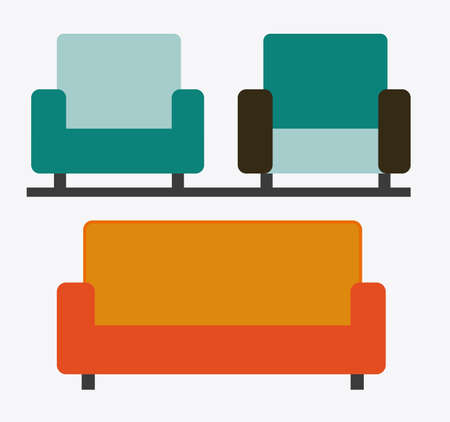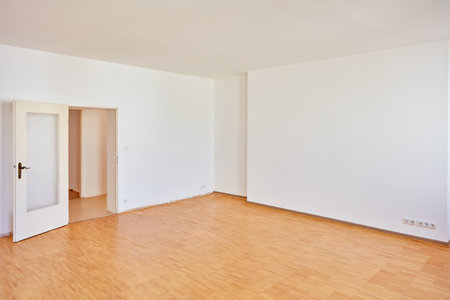Introduction to Classic Wood Flooring in UK Homes
Classic wood flooring has long been a beloved feature in British homes, weaving its way through centuries of architectural and interior trends. Whether it’s the stately herringbone parquet found in Victorian townhouses or the warm, wide oak planks typical of countryside cottages, traditional wood floors have earned their place at the heart of UK home style. Their enduring popularity stems from their ability to blend seamlessly with both period features and contemporary décor, providing a timeless backdrop that anchors any living space. For many homeowners across the UK, classic wood flooring is more than just a practical surface—it’s an investment in character and charm, reflecting a deep appreciation for craftsmanship and natural materials within British interiors.
2. Aesthetic Appeal and Timelessness
When it comes to elevating the atmosphere of British residences, classic wood flooring stands out for its visual charm and enduring elegance. The rich grains, subtle variations, and natural warmth of timber instantly create a welcoming environment that feels both homely and sophisticated. Unlike many modern alternatives, wood floors possess a character that matures gracefully over time, often looking even better as they age. This timeless quality makes them particularly well-suited to the UK’s diverse range of homes, from stately Victorian terraces to contemporary flats.
One reason for their popularity is how seamlessly they blend with the eclectic interior styles found across the UK. Whether paired with period features like ornate coving and sash windows or more minimalist, modern décor, classic wood flooring acts as a versatile backdrop that enhances other design elements rather than competing with them.
Visual Benefits at a Glance
| Feature | Impact on Home Aesthetics |
|---|---|
| Natural Grain Patterns | Add texture and depth to living spaces |
| Warm Tones | Create a cosier and more inviting ambience, especially valuable in cooler UK climates |
| Aging Patina | Contributes to a lived-in feel that many British homeowners cherish |
| Compatibility with Rugs & Furnishings | Allows easy seasonal updates without clashing styles |
A Lasting Investment in Style
Classic wood floors are more than just a fleeting trend; their appeal has stood the test of time throughout centuries of British home design. Whether you’re looking to retain period authenticity or introduce subtle luxury to a newer property, investing in quality wood flooring ensures your interiors remain stylish for years to come. In short, few choices offer such an effective balance between tradition and adaptability, making classic wood flooring a perennial favourite among UK homeowners.

3. Practical Benefits for Daily Living
When it comes to everyday life in UK residences, classic wood flooring offers a range of practical advantages that truly shine through the hustle and bustle of daily routines. One of the key benefits is its renowned durability. High-quality hardwood can withstand years of foot traffic, energetic children, and even the paws of family pets, all without losing its charm. Unlike carpets that can quickly look tired or stained, wooden floors remain resilient and are less prone to showing wear and tear.
Another major plus is the ease of cleaning. In British homes where muddy boots and rainy weather are commonplace, the practicality of being able to sweep or mop away dirt and moisture is invaluable. Spills can be wiped up in a flash, making it an excellent choice for busy households or those who like to entertain. This low-maintenance aspect means less time spent on chores and more time enjoying your living space.
Wood flooring also responds well to Britain’s famously variable climate. While humidity and temperature changes might cause some expansion or contraction, modern finishes and installation techniques help minimise these effects. Unlike carpeting, which can harbour dust mites and allergens—a particular concern during damp British winters—wooden floors contribute to a healthier indoor environment by being easy to keep dust-free.
All these factors combine to make classic wood flooring a practical option for daily living, blending seamlessly with both the aesthetic needs and functional demands of UK homes.
4. Potential Drawbacks and Challenges
While classic wood flooring brings undeniable character and warmth to UK homes, it is important to consider the potential drawbacks that might affect its long-term performance and practicality. Here, we’ll explore some of the main challenges homeowners face with wooden floors in a British context.
Susceptibility to Moisture
The UK’s famously damp climate means moisture can be a real concern for wood flooring. Prolonged exposure to humidity, frequent rainfall, or even minor spills can cause warping, swelling, or discolouration. This makes wood flooring less ideal for areas like kitchens, bathrooms, and basements unless special precautions are taken.
Maintenance Requirements
Classic wood floors require consistent care to retain their beauty and function. Regular sweeping, prompt spill clean-up, and periodic resealing or oiling are necessary to protect the finish and prevent damage. For busy households or those seeking low-maintenance options, this upkeep can feel burdensome.
Sensitivity to Temperature Fluctuations
The UK’s seasonal shifts – from chilly winters with central heating to warm, humid summers – can cause natural expansion and contraction in timber boards. Over time, this movement may lead to gaps between planks or even creaking noises underfoot. Proper acclimatisation and expert installation help reduce these issues but do not eliminate them entirely.
Common Challenges of Wood Flooring in UK Homes
| Challenge | Description | Impact on Daily Life |
|---|---|---|
| Moisture Sensitivity | Prone to swelling or warping in damp conditions | Extra vigilance required in wet areas; may limit room suitability |
| Maintenance Needs | Requires regular cleaning and periodic treatment | Takes more effort compared to alternatives like laminate or vinyl |
| Temperature Changes | Boards expand/contract with seasonal shifts | Potential for gaps, movement, or noise over time |
These considerations don’t mean classic wood flooring isn’t suitable for UK residences – far from it. However, awareness of these potential challenges helps homeowners plan accordingly and make informed choices about where and how to use this timeless material in their homes.
5. Environmental Impact and Sustainability
When weighing up the pros and cons of classic wood flooring for UK homes, it’s important to consider its environmental footprint. The sourcing of timber plays a key role: opting for suppliers who use FSC-certified wood ensures that your flooring comes from responsibly managed forests. This is increasingly significant in the UK, where many homeowners are choosing materials with clear eco credentials. In terms of longevity, wood flooring stands out—it’s remarkably durable, often lasting for generations with the right care. This reduces the need for frequent replacement, cutting down on waste compared to some synthetic alternatives. However, not all wood floors are equal; engineered options can sometimes use less hardwood per plank, making them a more resource-efficient choice without sacrificing the classic look. UK trends also reflect a growing preference for reclaimed or recycled wood flooring. These options offer unique character and help divert usable materials from landfill, fitting seamlessly into both period properties and contemporary spaces. On the downside, transporting exotic woods over long distances increases carbon emissions, so locally sourced varieties—such as British oak or ash—are becoming more popular among eco-conscious renovators. Ultimately, classic wood flooring can be a sustainable option if you choose carefully, prioritising responsible sourcing and long-term use to align with the UK’s evolving values around green living.
6. Conclusion: Is Wood Flooring Right for Your UK Home?
Choosing classic wood flooring for your UK residence is a decision that goes beyond simple aesthetics. It’s about balancing timeless charm with practical needs and lifestyle considerations. As we’ve explored, wood floors offer undeniable warmth, elegance, and can enhance the value of your property—a tempting prospect for many British homeowners keen on both comfort and investment. However, it’s crucial to weigh these benefits against the realities of maintenance, susceptibility to moisture, and the initial installation costs.
If you live in a period property or love traditional interiors, wood flooring can amplify those quintessential British home vibes. Yet, in busy family homes or areas with high footfall and unpredictable weather—think muddy boots after a walk on Hampstead Heath—it may require more upkeep than other alternatives. Modern engineered woods do provide better resistance to warping and are easier to care for, but no wooden floor is entirely carefree.
Ultimately, deciding if classic wood flooring fits your lifestyle depends on how much time and effort you’re willing to invest in its care, as well as your personal taste. For those who value natural textures, history underfoot, and don’t mind rolling up their sleeves for the occasional polish or repair, wood flooring is a brilliant choice. For others prioritising low-maintenance living or dealing with particularly damp environments, alternatives like luxury vinyl or quality laminates might be more sensible.
Before making your final decision, consider your household’s daily routines, the typical British climate in your area, and your long-term plans for the property. Weigh the pros and cons honestly—classic wood flooring is an investment not just in style but also in ongoing care. If it aligns with your vision and you’re prepared for a bit of TLC now and then, classic wood could be just what gives your UK home that perfect blend of character and comfort.


